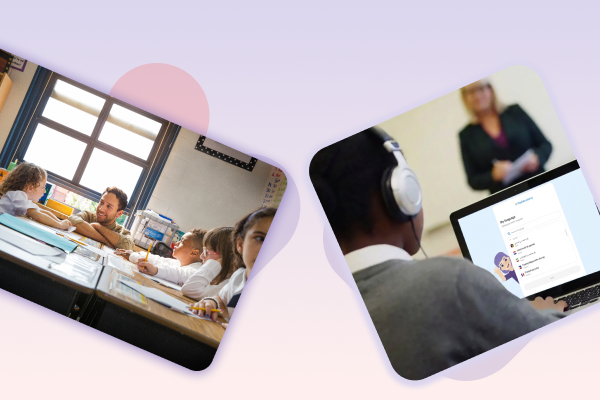

In this blog, we celebrate all things emoji to teach English to EAL pupils. In 2015, the ‘Face with Tears of Joy’ emoji was chosen as Oxford’s word of the year. The activities in this blog are great to build confidence about vocabulary and can be used in the classroom or at home. If they are completed at home, pupils can take screenshots of their conversations and send to you to assess whether the work has been completed. In the classroom, pupils can also use whiteboard to draw their own emojis.
1. Which emoji am I thinking of?
For this exercise, pupils can work in pairs to guess which emoji is being thought of by their partner. This activity starts by one pupil sending a word or description of the emoji to their partner, who must send back the correct emoji. The first pupil then replies saying whether their guess is correct or not before the pupils switch.
2. Storytime
In this second activity, one pupil chooses 4 emojis and their partner must write a story or sentence which links the emojis together. EAL pupils can also develop their speaking skills by sending a voice memo of their story or sentence.

3. Teaching vocabulary
Emojis are also a great way to teach vocabulary. Through teaching vocabulary with audio and visual instructions, learners are more likely to remember it. Incidentally, this is how FlashAcademy® teaches vocabulary by providing visual and audio clues for learners. This is particularly effective for idiomatic expressions such as ‘to feel green’, ‘mind-blown’ or ‘to see dollar signs’.
FlashAcademy®’s Wow Word lessons use animated gifs to teach tier 2 vocabulary, for which some printable examples can be found here.
4. Emoji dialogues
Again, pupils can work in pairs for this exercise. Each learner picks 5 emojis. They must have a conversation using the emojis they have chosen, without knowing the emojis their partner has chosen. For example:
Pupil A: I just saw the cutest dog (inserts heart-eyes emoji)
Pupil B: How cute! But I’m allergic to dogs (inserts sneezing emoji)
Another option is for pupils to choose 5 flashcards from the wow home learning pack and have the conversation in the classroom:
Pupil A: (puts down the devour flashcard) I just devoured a lemon drizzle cake.
Pupil B: (puts down the mouth-watering flashcard) Yummy! I could just eat a slice.
Pupil A: (uses the sour flashcard) The lemon icing was a little too sour for me though.

5. Using emojis to check pupils understanding
Finally, FlashAcademy®’s wheel of emotions and the emoji flashcards (both can be downloaded here) can be used to check comprehension and emotions of learners. This can be a great way to start the class to understand how your EAL pupils are feeling or at the end of the class to monitor comprehension. This could also be useful to check how pupils feel when they are learning at home.
For more ideas, check out the British Council and other activities using WhatsApp here.

